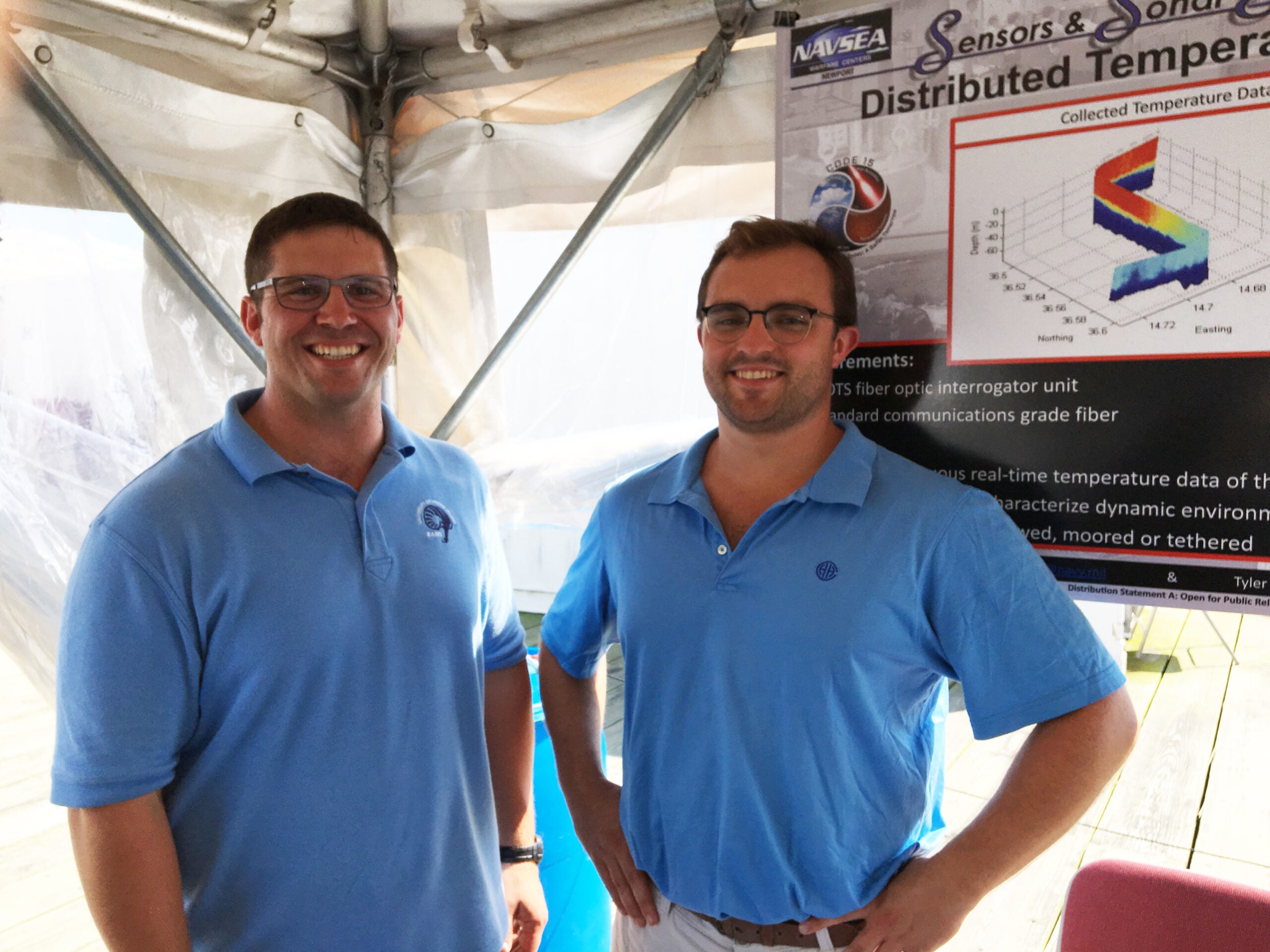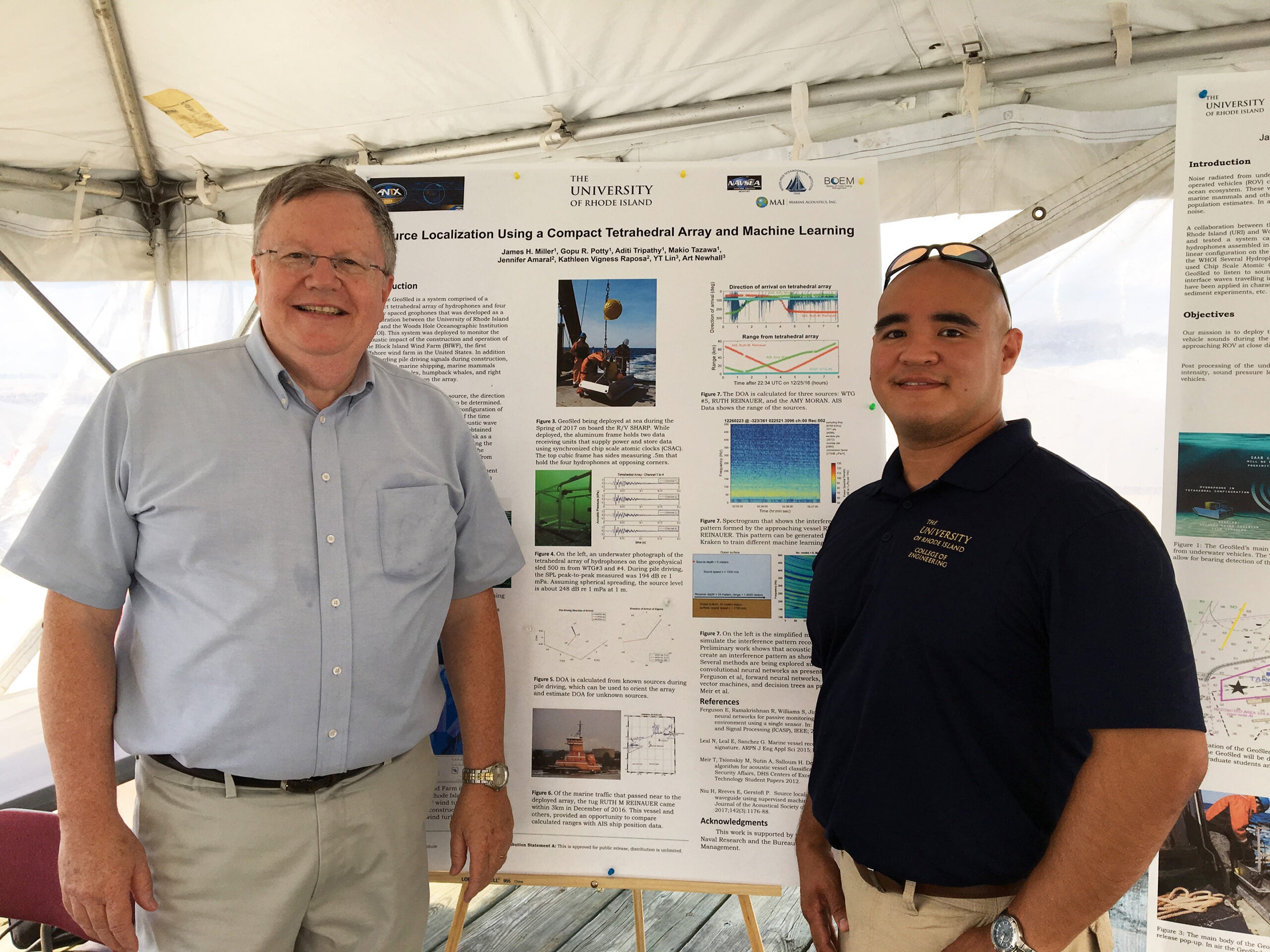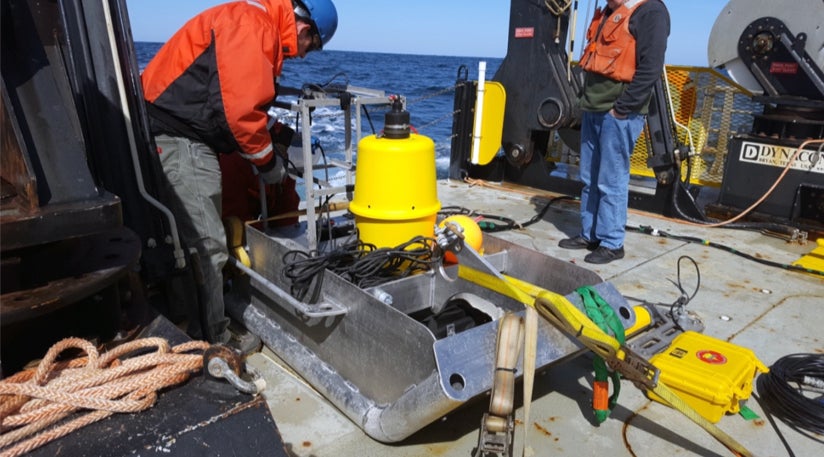KINGSTON, R.I. — Sept. 18, 2018 — It’s been a national and local refrain: There are not enough qualified, well-educated workers to fill the increasing numbers of jobs in advanced technology fields.
Don’t tell that to the 900-plus University of Rhode Island alumni who work at the Naval Undersea Warfare Center (NUWC), one of the nation’s top defense research and development laboratories.
Their roles at the Middletown facility were on full display recently as the center held its fourth annual Advanced Naval Technology Exercise, with the theme, “Human Machine Interaction.” This year’s event brought together 55 industry, academic and government partners.

“URI Engineering is a major pipeline of qualified graduates and researchers in the undersea technologies. Our partnership with NUWC is a win-win for the University, NUWC and the regional economy,” said Raymond Wright, dean of URI’s College of Engineering.
Vic Ricci, chief technology officer at NUWC and a URI graduate, said he told Wright that URI is integral to the warfare center. “From URI educating many in our workforce to the collaborative research we do, this has become a natural relationship with the University,” Ricci said. “It has led to the development of various projects of high interest to us. There is a lot of great talent at URI.”
Nicholas DelGreco, integration lead for the exercise, and Peter J. Hardro, the director of the event at the warfare center, took turns explaining the program to the media.
Hardo said there were three goals: foster collaboration among the participants; innovate faster; and build on rapid prototyping and provide feedback to the fleet and operational commands.
“Our research focus is human-machine interaction, exploring technology for use under sea, on the surface and in the air, DelGreco said. “The concept of human trust in machines is central to this exercise.”

“What you are seeing today is the evolution to unmanned systems,” Hardro said. “We are trying to minimize people needed to run and manage systems. The goal is to expand the number of unmanned systems that can be operated by one person. We are looking at how to take the burden off the operator.”
DelGreco earned his bachelor’s degrees at URI in industrial engineering and German, and he is pursuing his master of business administration. Hardro received his master’s and doctoral degrees from URI in engineering.
One of the research initiatives was titled the GeoSled, a project led by URI in collaboration with the Woods Hole Oceanographic Institution. Students, faculty, engineers and researchers from the two institutions designed, built and tested the system, which collects data on noise created by underwater vehicles and marine animals, which could affect tactical operations. The GeoSled was at the bottom of Narragansett Bay collecting data for the entire exercise. The acoustic array for the unit was designed by NUWC engineer and URI alumnus Steve Crocker.
The GeoSled contains an array of hydrophones and geophones, which pick up noise in the water and vibrations on the seafloor. James Miller, URI professor of ocean engineering, said the GeoSled is a research and development project that gathers and measures sound from ships, explosions and wind farms. Miller’s team has also measured sound created by the construction and operation of the Block Island wind turbines.
“The technology, algorithms, ideas and concepts we develop and test here can be expanded by NUWC and industry,” Miller said. “It’s like a relay race. Our undergraduate and graduate students work with professors at the beginning of the process, and then we hand it off to others for further development.”
Makio Tazawa, who just completed a master’s degree in ocean engineering at URI, said the data gathered by the device can be processed using machine learning to determine a wide range of sounds and vibrations. He said the 6-foot-by-4-foot-by-4-foot device represents a different approach for sound detection that could have Navy applications.
“The device has been collecting data all week here using battery power,” said Tazawa, who recently began a job with NUWC. “We can deploy this device on the ocean floor for up to a month for data collection.”
At a nearby popup tent, two URI graduates now employed by NUWC, Brian Amaral and Tyler Pickering, presented work on behalf of its Sensors & Sonar Systems Department. The project is titled Distributed Temperature Sensing, and it provides real-time temperature data of the water column, monitors and characterizes dynamic environments and can be towed, moored or tethered.
Amaral, who earned four degrees from URI–his bachelor’s and master’s degrees in ocean engineering and a combined Blue MBA and master’s degree in oceanography, said he is pleased to be working in such a challenging field.
“Temperature and environmental sensing is critical to the Navy,” Amaral said. “It’s vital to the Navy to maintain acoustic superiority. Being able to detect sound as it travels slower in cooler water and faster in warm water and as it moves through a current change or an eddy, to do it faster and better, keeps us ahead of our adversaries.”
Pickering, who earned his bachelor’s degree in ocean engineering, said URI prepared him well for his work at NUWC.
“It helped give me a strong sense of the career I wanted to pursue,” he said. “Since I have worked on a variety of projects at URI and NUWC, I can now easily adapt to work in numerous research areas at NUWC.”
U.S. Sen. Sheldon Whitehouse and Congressman Jim Langevin spoke along with numerous U.S. Navy leaders as unmanned vehicles conducted their tasks on the water behind them. The experiment showcased a systems approach to expeditionary mine warfare, which was demonstrated by Teledyne Marine and its partners Charles River Analytics, Greensea, Marine Advanced Research, Plan Aerosystems, Blue Isles Powerdocks and Teledyne Caris. It featured two unmanned autonomous surface vessels and an unmanned aerial vehicle launched from the larger surface vehicle.
After their official comments, Whitehouse and Langevin discussed the importance of URI’s role at the event.
“There is a reason Dean Wright is here today,” Whitehouse said. “It is indicative of NUWC’s important relationship with URI engineering. I am happy to see such a great collaboration.”
“URI’s growing role with NUWC is great for the University and will ultimately benefit our military and the local industry that supports it,” Langevin said. “The steady stream of URI talent to NUWC – from undergraduates, graduate students, doctoral students, and faculty – is a win-win all around.”

